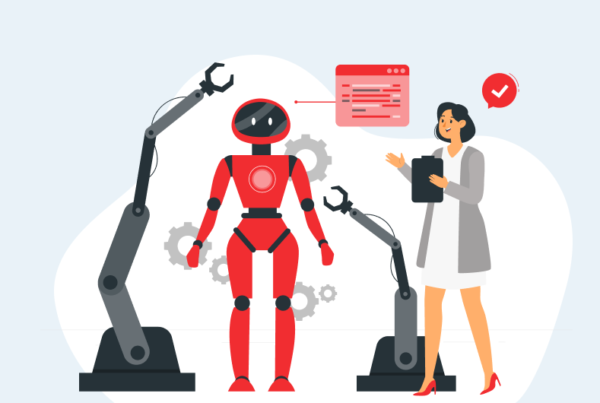
Resources > Blog > From Implementation to Adoption: SuccessFactors Change Management Best Practices
From Implementation to Adoption: SuccessFactors Change Management Best Practices
Published on Oct 14, 2023

Implementing SuccessFactors is about much more than technology – it requires a concerted change management effort to drive user adoption. With proper adoption, expected outcomes from investments in leading platforms are realised.
Change management ensures stakeholders across the organisation fully embrace the cultural, operational, and technological changes required to maximise the benefits of new systems. It requires going beyond basic training and addressing mindsets and behaviours.
Done right, change management enables the realisation of ROI through high utilisation and proficiency. Skipped or under-invested in, it leads to lacklustre results and wasted spend.
This guide will cover why change management is critical for SuccessFactors, typical challenges faced, a process for driving adoption, best practices based on lessons from the front lines, and key indicators for measuring progress.
Definition and Importance of Change Management
Change management ensures the adoption and usage of major changes within an organisation. It encompasses stakeholder engagement, communication, training, support structures, and reinforcement mechanisms.
For an HR transformation initiative like SuccessFactors, change management is critical to:
- Drive adoption across all user groups through promotion and education
- Enable proficiency for users to utilise new capabilities and optimise outcomes
- Provide ongoing support so users can become self-sufficient
- Reinforce new behaviours until they become a habit
- Continuously improve by soliciting user feedback
- Measure adoption levels to identify and address gaps
- Build excitement and advocacy for the change among stakeholders
Change management bridges the gap between implementation and outcomes by facilitating organisational alignment, mindset shifts, and new working methods. With it, transformations gain traction.
Challenges With Adoption
When rolling out transformations like SuccessFactors, organisations inevitably face adoption challenges that can derail outcomes.
Common pitfalls include:
- Resistance to Change – Stakeholders clinging to old ways instinctively resist unknown change. This ranges from passive indifference to active sabotage.
- Lack of User Buy-In – Users not seeing personal benefits disengage. Change is done “to them” vs “with them,” draining momentum.
- Poor Communication – Insufficient information leaves users confused about expectations. Rumours and misinformation fill the void.
- Unclear Responsibilities – With no owner, changes happen haphazardly. Users need direction, and change stagnates.
The risks are wasted investments, diluted benefits, and disengaged stakeholders. We’ve seen it dozens of times – organisations underestimate adoption challenges. But there are proven ways to overcome this.
First, we must acknowledge people naturally resist change. Our brains perceive it as a threat. Only through purposeful change management do we cross the chasm into new behaviours.
But done right, we can transform not just systems but entire cultures.
Roadmap For Change
Driving adoption requires structure – we can’t leave it to chance.
The most effective path follows these key steps:
- Stakeholder Analysis – Identify user profiles and analyse needs—segment by role, level, and location.
- Sponsorship and Advocacy – Secure executive champions to model change and rally support.
- Training Needs Assessment – Determine required skills and knowledge. Assess readiness gaps.
- Communication Planning – Craft targeted messaging and channels for each audience.
- Coaching and Support – Provide ongoing guidance as users apply new capabilities.
This process builds understanding, capability, reinforcement, and care – the pillars of adoption. Skipping elements risks faltering uptake.
But first, some context on why this sequence works based on organisational psychology:
- People want to know, “What’s in it for me?” Stakeholder analysis answers that question for each user segment. Personal relevance motivates adoption.
- Top-down commitment legitimises change. Sponsorship makes it real. Peers’ modelling change makes it relatable.
- Skill building gives confidence. Training shows people “how” so change seems achievable.
- Multi-channel communication ensures message consistency. It drives home the “why” until belief takes hold.
Application support cements learning. Users know help is there as they put skills into practice.
Best Practices To Follow
On the change management journey, smart organisations leverage these proven success strategies:
- Get Executive Sponsorship – C-suite leaders publicly backing the change provide momentum. Users take cues from authority figures.
- Involve Users Early – Co-creation builds buy-in—joint design sows understanding and ownership.
- Make Training Role-Based – Tailor content to each user’s needs. Relevance boosts retention and application.
- Leverage Super Users as Advocates – Identify influencers to be deployment pilots. Their experience shapes peers’ perceptions.
- Reinforce Changes Through Multiple Channels – Communications must surround users omniscientally to sink in.
- Collect Feedback Regularly – Continuous user input highlights adoption gaps. We adjust efforts dynamically.
- Iterate Based on Usage Metrics – Low utilisation signals disconnects between intent and reality. We course correct.
These best practices derive from how people learn and adapt. Executive mandates work on paper, but frontline insights shape reality. That truth guides our path.
Research by Prosci found organisations that apply change management are 6x more likely to achieve desired outcomes than those that don’t.
But we must also avoid common missteps. The next section highlights pitfalls that can derail SuccessFactors adoption despite best intentions.
The Traps To Avoid
In contrast to those best practices, many organisations are derailed by these all-too-common pitfalls:
- Top-Down Directives – Decrees without input foster resentment. Adoption requires willing hearts and minds.
- Technology Focus Only – Leading with tools overlooks culture and habits. People ultimately determine utilisation.
- Insufficient Training Investment – Change capability building needs time and resources—underfunding hampers proficiency
- Lack of Post-Launch Reinforcement – Early support faded too quickly, leaving users adrift. Ongoing nudges are essential.
These missteps reflect the hard truth – adoption resides in people, not systems. To motivate a workforce, leaders must interpret events through the human lens.
But take heart: the path forward lies in simply avoiding past mistakes.
The journey requires rigour, but the payoff is immense – an agile organisation positioned to unlock the full value of its HR technology investments.
How To Know You Are Succeeding
With a sound change management approach, how do we measure success? Leading indicators include
- User Sentiment Polls – Positive feedback on ease of use, utility, etc, signals engagement.
- Training Attendance and Test Scores – High participation and proficiency show capability building.
- Support Case Volume – Low and declining opened cases indicate self-sufficiency.
- Super User Utilization – Early adopter usage predicts wider adoption as they influence peers.
Lagging indicators that quantify results include:
- Adoption Rates – Percentage of users actively utilising the system per week/month.
- Transaction Volumes – A steady increase in the volume of system processes completed indicates integration.
- Business Metric Impact – Correlating use to HR metrics shows operational behaviour change.
Qualitative feedback tells the story behind the stats. Surveys, focus groups and interviews lend “colour” to complement quantitative data.
Tracking indicators at multiple levels gives us a comprehensive view of adoption trends. This enables proactive rather than reactive action to keep the transformation momentum strong.
Making Change Stick
The work continues once SuccessFactors is live. Change management must evolve from launch to long-term optimisation through:
- Ongoing Refinements – Continuous small tweaks based on user feedback enhance fit.
- Regular Communications – Reinforcing messages even after launch keeps change top of mind.
- Embedding in Processes – Integrating utilisation into core HR processes drives adoption through accountability.
- Tracking Metrics Over Time – Longitudinal tracking shows adoption trends and flags risk areas
To sustain change, the focus must shift from process to habit. Useful systems that employees enjoy using get ingrained by default.
The goal is to create a culture of continuous improvement where technology evolves with business needs. With ongoing change management, SuccessFactors transitions from project to business as usual.
Key Takeaways on This Journey
- Recognise Adoption is Everything – Investment in technology pays off with people fully utilising it. Change management bridges the gap between intent and outcome.
- Take a Structured Approach – Hoping for organic adoption is wishful thinking. We need a tested methodology addressing people, processes, and technology.
- Continuous Improvement is Key – Change management cannot be a one-off effort. Driving and sustaining adoption requires persistence and evolution based on feedback.
- The companies dominating their industries have these traits in common – They obsess over change management and never take adoption for granted. People ultimately determine the ROI of HR technology.
We hope this guide provided pragmatic insights into driving SuccessFactors adoption, from avoiding pitfalls to measuring progress. But most importantly, remember change never ends. It is a continual process of listening, aligning, and improving.
Together, we can elevate our organisations and maximise the value of HR’s technology investments.







Share with your network
Get updates in your inbox